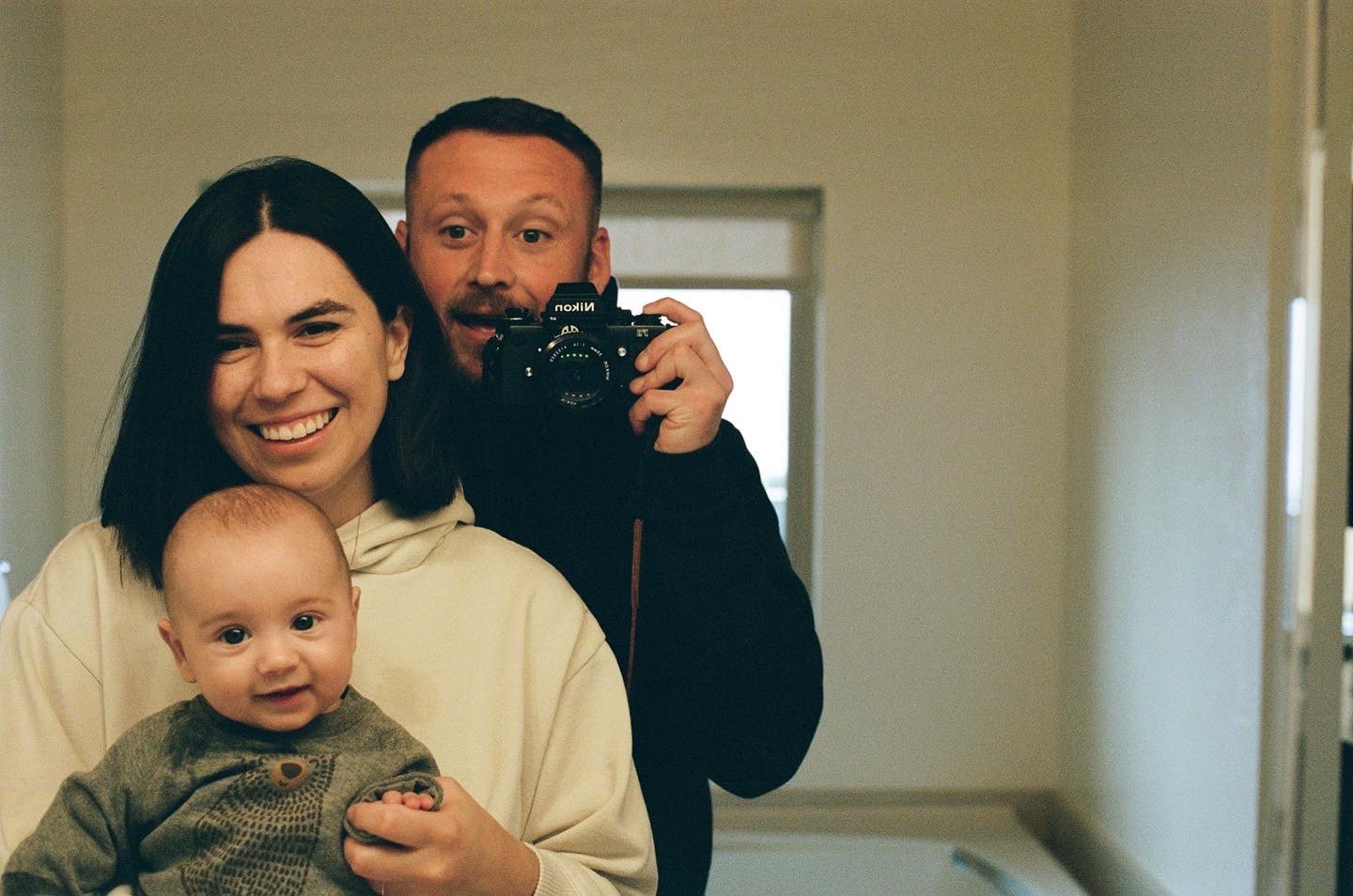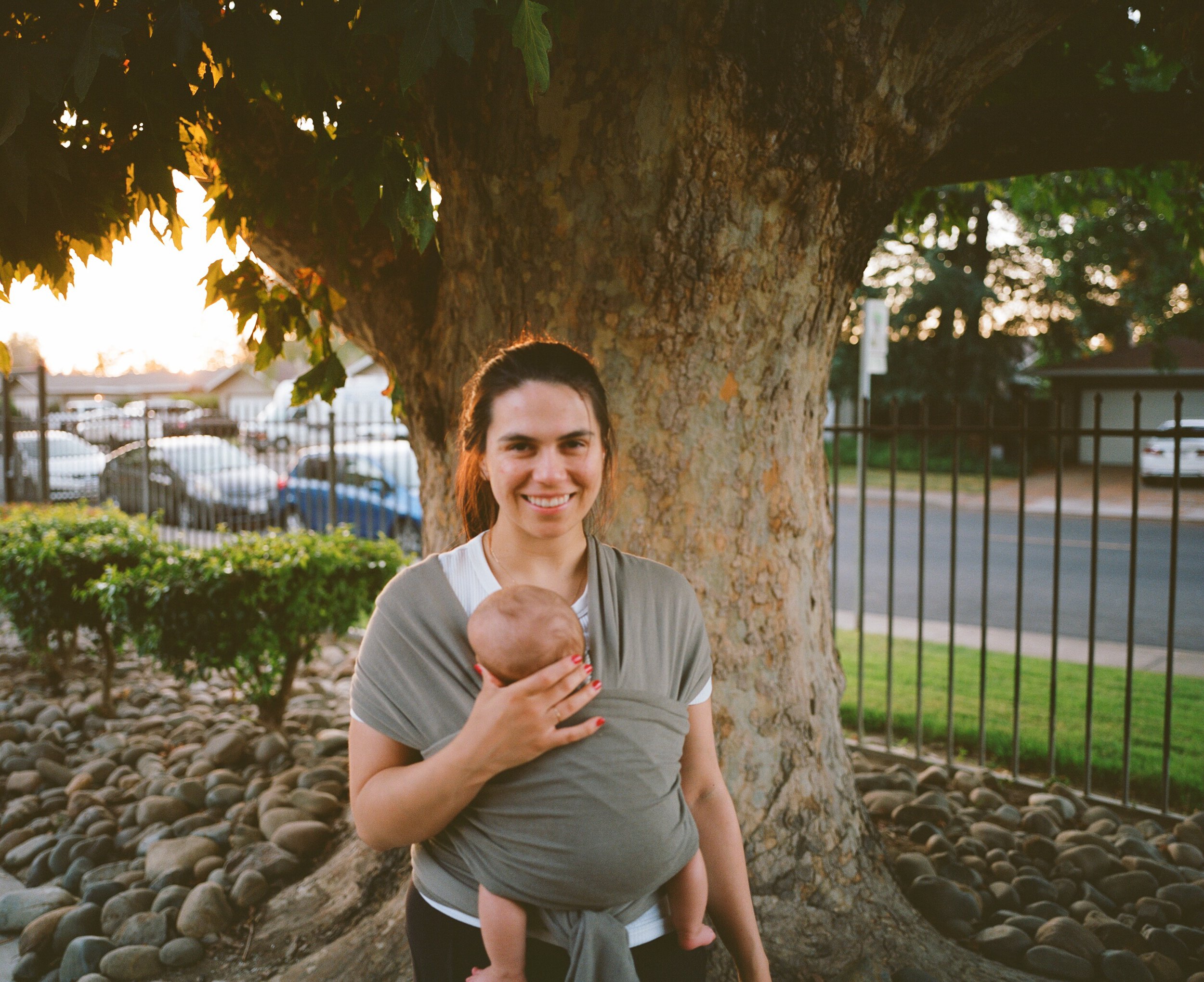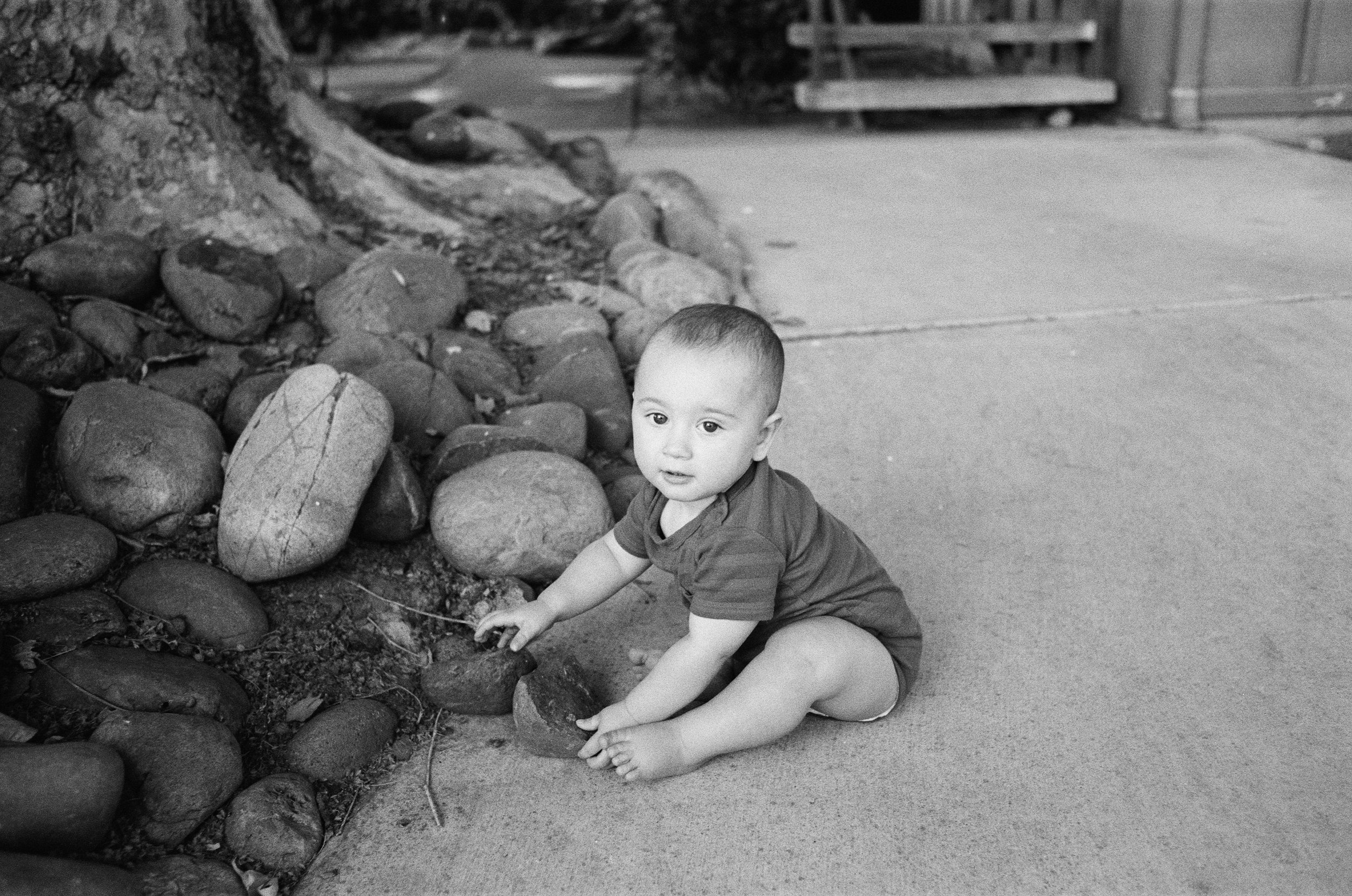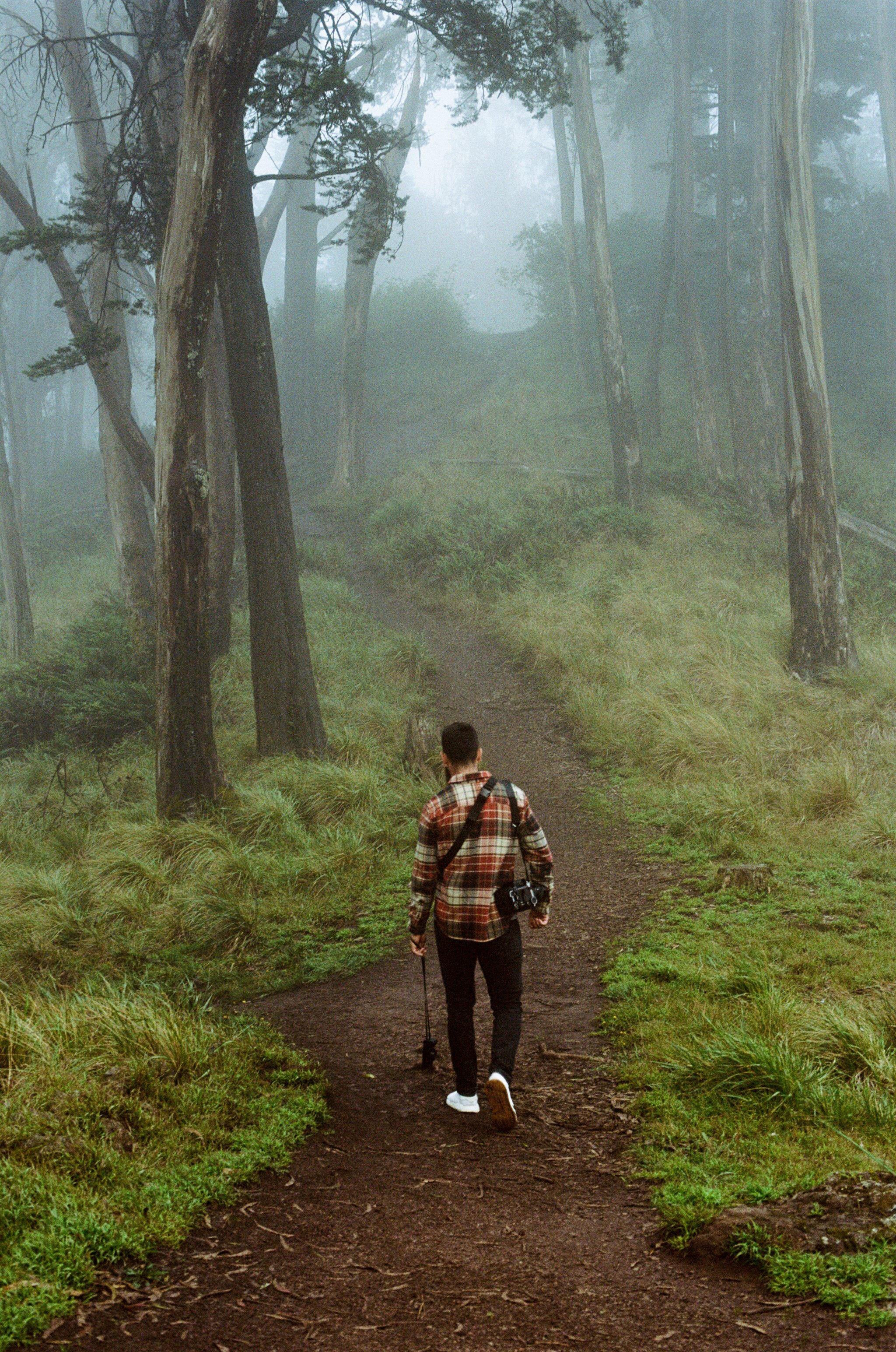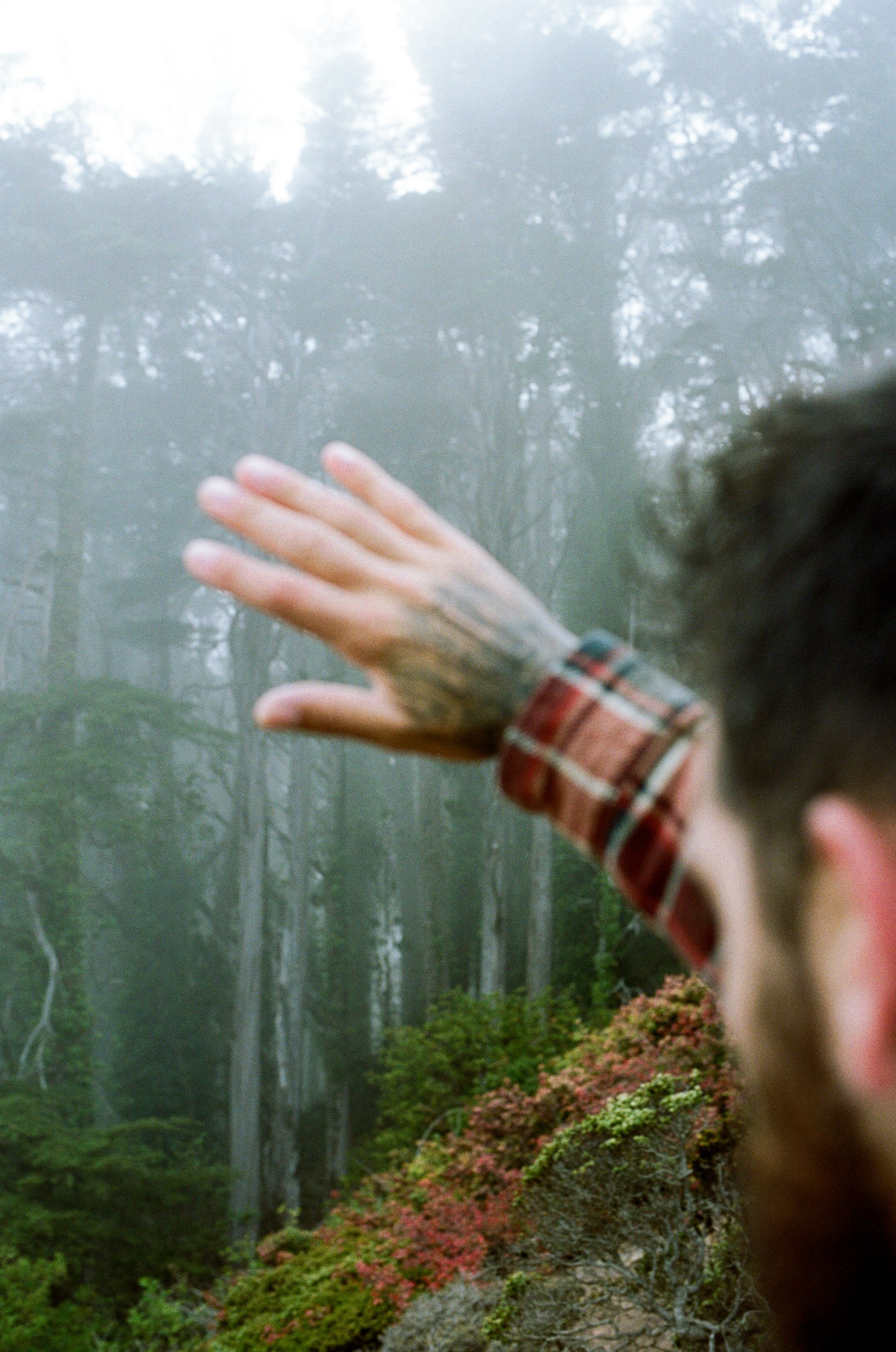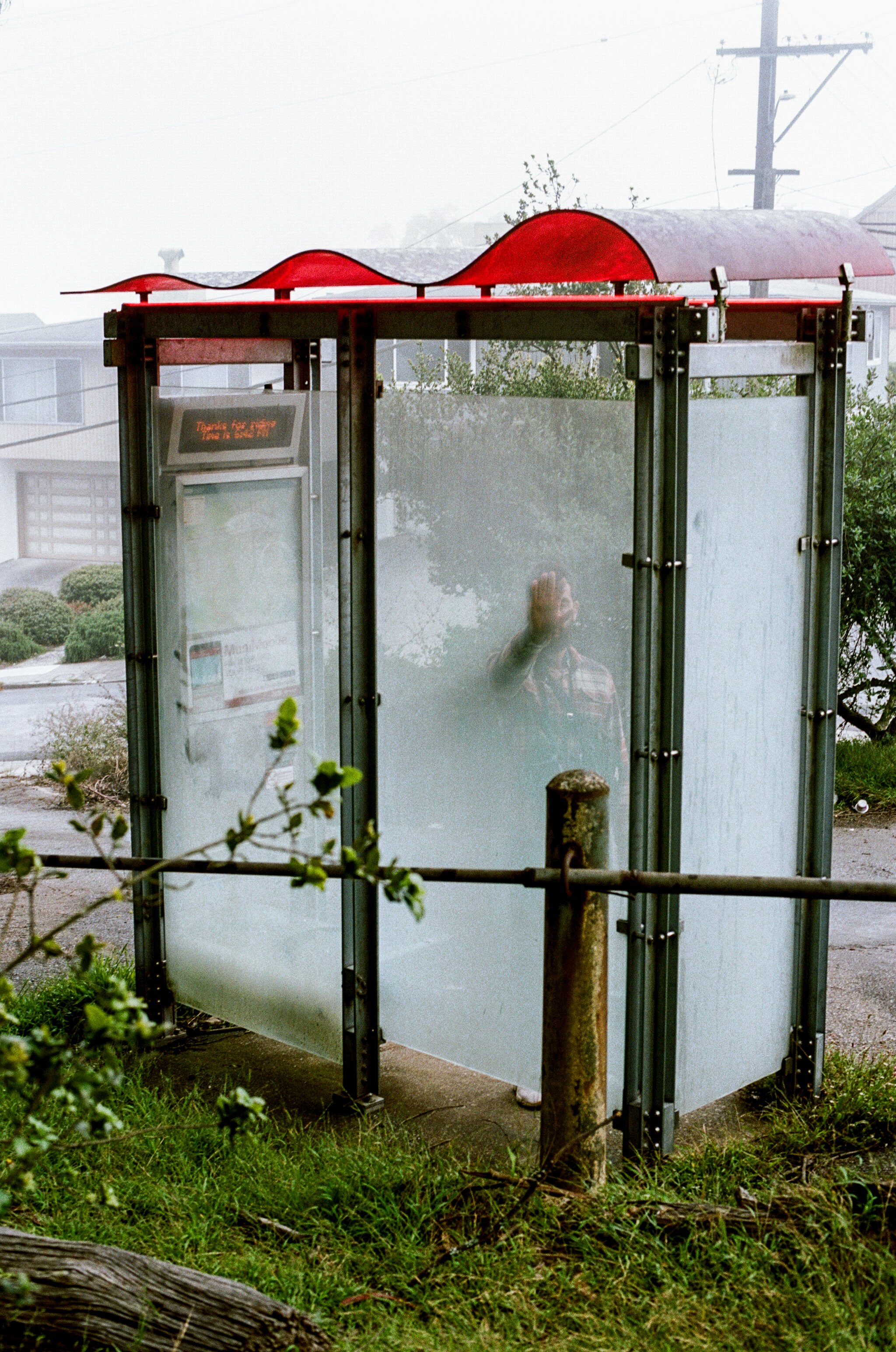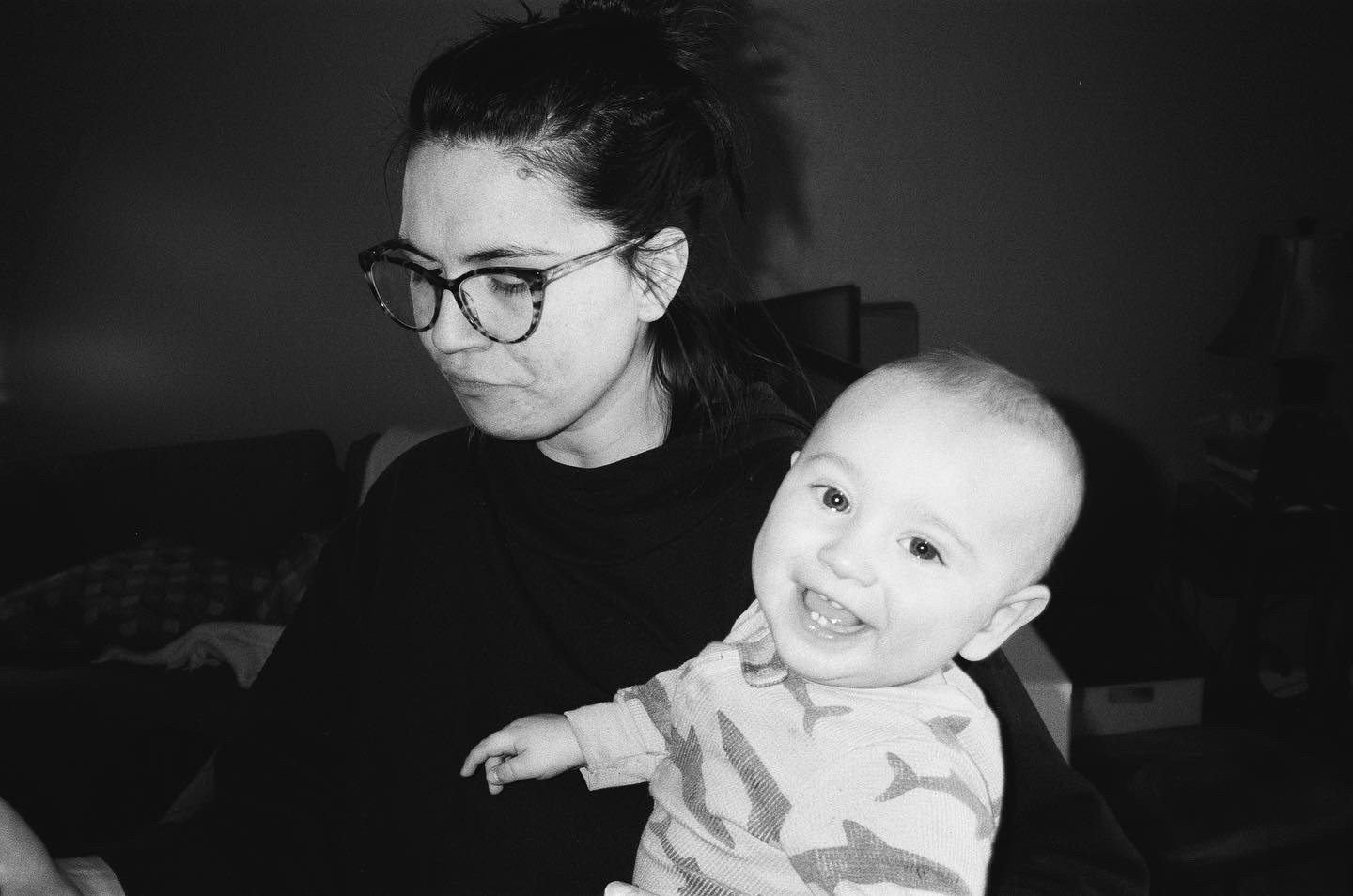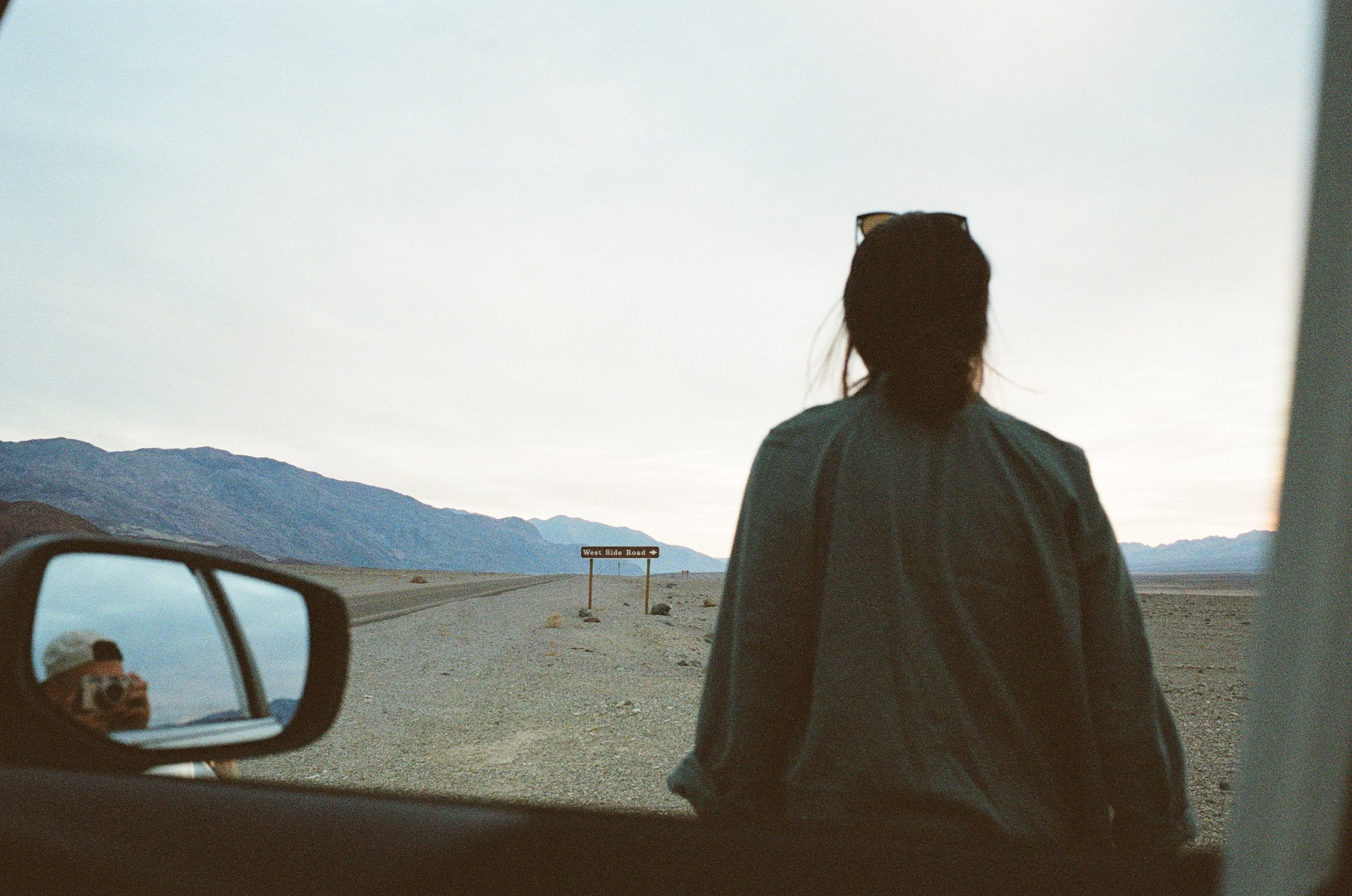Slowing Down with Film Photography - by Eric Smith
Since launching Pastiche Magazine in November 2021, I’ve been lucky enough to be a part of a community that’s supportive and encouraging to artists of all disciplines. I’ve also relished in the relationships I’ve developed with people around the world purely upon the common ground of positivity and photography. There are few as honest and open to share every facet of their story as Eric Smith. I had the pleasure of speaking with Eric late last year and enjoyed our conversation about everything from photography, creative processes and mental health. Since then, life grasped us both with a heavy hand, bringing obstacle after obstacle. Yet, he graciously took the time to share a story and some of his creative process for everyone to read.
This article below is the reason I wanted to begin a magazine like Pastiche, why I love working on new projects and why continue to stay inspired by the community and the new work I see being shared every day. Please take the time to appreciate Eric’s creative journey shared in this article. - Thom ✌️
I went for a run in April 2020 and something shifted in me.
It had been a month since lockdown and I had settled into a routine of going out midday to let go on the pavement. I wasn’t used to working from home full time or being cooped up. The feeling of the four walls closing in was there everyday like it was seated in the “cubicle” next to me. It just showed up one day and never went away. Getting out and moving was my chance to let go of that feeling and all of the anxieties that had crept in the past few months.
About a half mile into the run, my legs sputtered and started to lock up. I noticed my energy was low that day and the voice that beckons to call it quits was loud from the start. Coming up on the corner, I felt as if my legs had been cast in cement and the circulation to my right foot was being cut off. After struggling for another block and a half, I decided to cut my run short. I was barely able to walk back. My legs felt shaky, depleted of energy. I pushed up the narrow stairs to our apartment and immediately sat down with a bottle of water. My legs were trembling. I tried several times in the following weeks to run, but my body just wouldn’t cooperate.
“My partner Haley and I would go for walks and let our cat out at the end of the day. As the days got longer, golden light would hit the blue walls of the building. I would bring my film camera with me, a Yashica T4, and just document. ”
It became a form of therapy. The camera had a little hole in the curtain that attached to the lens that was irreparable, so most negatives would have a small light leak in the corner. The T4 was perfect in its imperfection. I loved the 3D look and the fine grain in the photos. The colors were spot on. They had a look that was real. I had a digital camera, and that was my main shooter at the time, but there was a disconnect in the photos I took on my little Yashica from the ones I took with the Sony.
I went to Death Valley with Haley later that year. We had just found out she was pregnant with our son, Julian. We hiked around, set up a tripod and shot sunrise. We saw Zabriskie Point ignite with vivid morning light and rich color on the earthy formations below. We walked the dunes and I took portraits of Haley, with the slightest bump as the sun set in the background and the sky slowly turned a warm purple. It was a beautiful time for us in the desert and a great photo adventure, after a rather stressful year. Our year was ending with a great deal of hope.
Editing the photos from our trip, I wondered what these landscapes and portraits would look like on film. I craved the authenticity and the connectedness I felt with my film photos, but at the same time I very much liked the detail and precision I was getting with my A7RIII.
We hiked into a crowded Yosemite and shot the Firefall in February 2021. It was exhilarating to be around that many people, all huddled up in unison in hopes of seeing a flash of light that may or may not happen. Haley was six months pregnant by that time, right there beside me in the snow. And we talked and we watched and we waited. Some people next to us were friendly, but skeptical and we just told them to keep the faith. I had my A7RIII sitting on a tripod, wrapped in a sock. In my jacket pocket, two point and shoots - the Yaschica T4 and the Olympus MJU-II.
In a snowy field surrounded by giant trees, Mother Nature provided. The Firefall went off just before sunset that night for a glorious nine minutes. I snapped away with a flurry of shutters going off around me. The audible gasps, the oos and awes added to the spectacle. It was incredible to be there, to see a flash of sunlight reflected off a narrow stream of water descending the face of El Capitan. Seeing it with so many people, fellow photographers, with Haley, felt spiritual.
We hiked back to the car in total wonder and awe. Our spirits were high. The sun had set and Half Dome glowed blue in the distance. It was exhilarating. When I got my prints and scans back from the lab, I was blown away by the shots of the Firefall I got on film. The same spirit and joy I felt watching the Firefall was there for me in those photos.
After that, I picked up a Nikon F3 from Connor Hedges. It was pristine. The red Ferrari stripe on a flawless build with a Nikkor 50mm f1.4. I took it on a solo trip to Zion and Bryce and I might as well have left my digital camera back at home. The Nikon was a game changer.
But in Bryce, I struggled to keep up on the trail and I was left hurting from even the smallest physical effort. I found my self drenched in sweat trying to carry my legs up the steep, winding canyon and it took me awhile to get up and out of there. Back at my car, I was feeling lost. I was doing everything right, staying hydrated, getting rest, in decent shape. What was going on? I hiked Angels Landing the next morning and about two miles in my legs faltered while ascending fast. It brought me to my knees.
When I finally got to the top, the sun was already high up in the desert sky. Most of my photos were blown out by the mid morning light. I was feeling pretty defeated on my way back down. I called Haley to check in and after about five minutes, she was ready for me to come home. I was ready. I cut my trip short and drove 11 hours through the desert back to California. The whole time I had my Nikon F3 in my lap.
“A week later, our son Julian was born. He arrived six weeks ahead of his due date and spent his first ten days in the NICU. I was able to photograph his first hours on this earth on film. ”
Most of the photos from that roll are blurry and some are slightly out of focus, but those are memories I will cherish for a lifetime. The day we brought our son home, there wasn’t a cloud in the sky, just warm daylight.
Earlier that Spring I met my friend Coby Beltran in the City to catch up and shoot. That day he had just met Luis Cobello in the Outer Sunset and the three of us walked through Golden Gate Park before heading back into the Sunset. With Luis we talked about our backgrounds, our experience with art and photography. Coby and I met several years prior and had fatefully run into each other all over the place - Anaheim, Portland, Sacramento, Santa Cruz. He had his Pentax 6x7 and just been featured in Hutspot Magazine and was showing his art in a gallery. I was really inspired by his work and his commitment to photography and film. Luis had a beautiful Hassleblad and told us how the Apollo astronauts brought a modified version of this camera to the Moon. As we walked and talked, I found out Luis had a rich and storied background rooted in photo journalism. He’s photographed soccer teams, gun meet ups in America, the White Stripes, even spent time photographing the President of Venezuela. I was amazed by his story.
Coby and I continued walking and shooting after Luis went home. We started talking about his Pentax and Medium Format. I told him I had been drifting further and further away from shooting digital, but I couldn’t find something medium format and light to put in my pack and take on backpacking trips. He told me about his experience with the Mamiya 7 - a camera he had for a brief moment and lost - and said it was the sharpest camera he had ever shot. He said it would be the perfect camera for what I like to shoot.
By summer, I was all in on medium format. I sold my digital camera and lenses and picked up a Mamiya 7ii and a 65mm lens. I brought it up to McCloud to spend time with my parents and our newborn son. My dad and I drove up Castle Crags. I was convinced all weekend the Mamiya was broken because I could barely hear the shutter.
The Mamiya 7 is a sort of legend in the film community and really needs no introduction. It was Mamiya’s most fully realized camera system when it hit the scene in the mid to late 90’s. Light and compact for a medium format camera, it boasts a rangefinder and special leaf shutter system that makes it great for shooting on the go and at those low shutter speeds where only a Hail Mary and a deep breath would help. The leaf shutter also makes the camera incredibly quiet. I sometimes have to make a noise or indicate the picture has been taken because often my subjects are still waiting to hear the shutter slap that never comes. Just a faint click.
They somehow improved on perfection with the Mamiya 7ii, which boasts a brighter finder and a multi-exposure option. So, the camera wasn’t broken after all. The first roll came back detailed and crisp. I was excited for the potential even though I thought my compositions and exposure lacked.
I was eager to shoot again with a better understanding. I went up Mt. Tamalpais on a Sunday Afternoon in June. I got there early, well before sunset. I threw on my pack and hiked around Bolinas Ridge. It felt good to walk around as fog rolled up from coast and over the rolling hills. Once again, I struggled going down some of the steeper trails. My legs would tremor and shake on the decline and sputter climbing up. It messed with me. I had been hiking Mt Tam for years and loved playing on that mountain. Just two summers prior, a group of us hiked some 20 or so miles - from Stinson Beach to the East Peak Summit and back. And then, two weeks later summited Mt. Whitney on a day permit. I was trying to get used to this slowing down and learning to accept whatever was going on with me.
The scans I got back from Mt Tam were crisp. The detail was there in all it’s fine grain glory. The colors and the tones matched the moment, perfectly. The Mamiya and I were bonded from that day on. The speed of film was at my pace.
We brought Julian with us when we went back to the desert that Fall. My family was whole in our special place away from home. For as vast and seemingly empty as Death Valley is, the spirt in the place could fill infinite cups. With the Mamiya 7ii, I got to bring the magic and the moments shared there home. After that trip, I had no question that film is the medium I want to create in.
Despite my health, I’ve made a habit out of shooting often, shooting with other photographers, with family and friends. Something I was seriously lacking in shooting landscapes early in the morning and late in the afternoon during the pandemic was community. I’ve enjoyed meeting people through the very online film community. I’ve been fortunate to connect with other photographers and creatives through Instagram, Twitter and in the last couple years at in-person photo walks and meets.
One of my best friends today, Jose Garcia, I had met and knew loosely through friends for several years. We connected again through film photography and one day decided to meet up and shoot in the City. We took a drive up to Mt Davidson in SF and had a great shoot. Since then, we’ve taken road trips and shot all around California. What I enjoy most about my time shooting with Jose is our talks. We come from different walks of life, but our walk today is on the same path. We share that same drive to create and love for film. Today, he is a friend to my family, and a constant source of inspiration and guidance.
I really put my health and recovery in focus in 2022. A new round of tests in early January of this year reveled I had an under active thyroid and that I most likely had been experiencing varying thyroid issues over the past 10 years. As the doctor explained the symptoms of hypothyroidism, everything started to click for me: the lack of energy, the depression, the constant anxiety, the muscle deterioration, the fatigue, the myriad of other problems seemed to fit with this diagnosis. It was a relief to know and to hear their was a path forward. I started on a medication to get my levels back and I’m slowly feeling like my old self again, even though it will take some time to get it right.
Still I can’t help, but feel fortunate. Through a shift, I was forced to slow down and in that process I was able to reconnect with my love for photography in a meaningful way. This experience has given me perspective about my time on this earth and how I choose to spend it. In the last few years, I’ve had opportunities to work and photograph some very special occasions, people and places. I’ve traveled with my family and overcome some big obstacles along the way. Most importantly, I’m still here. This next year, I’ll be putting out my first photo book and collection.
But for now, my focus is on health. I’m taking each day, bit by bit.
Frame by frame.








